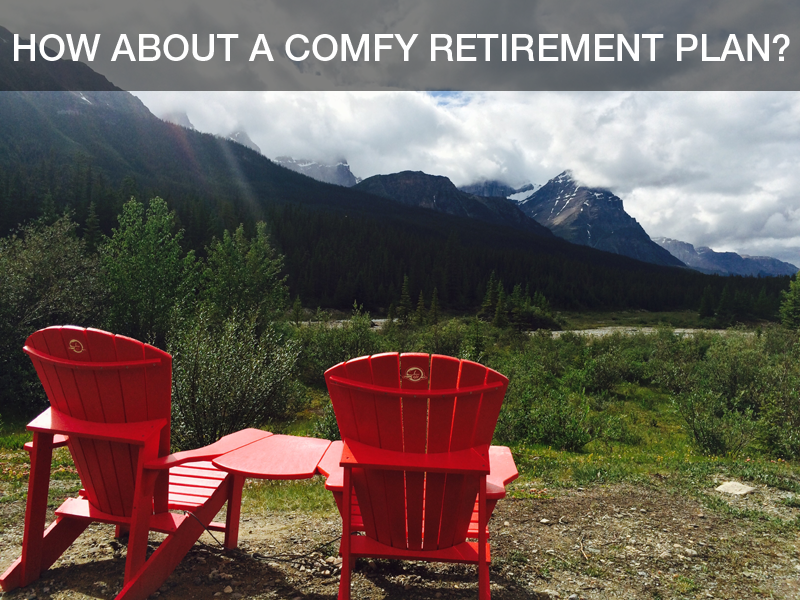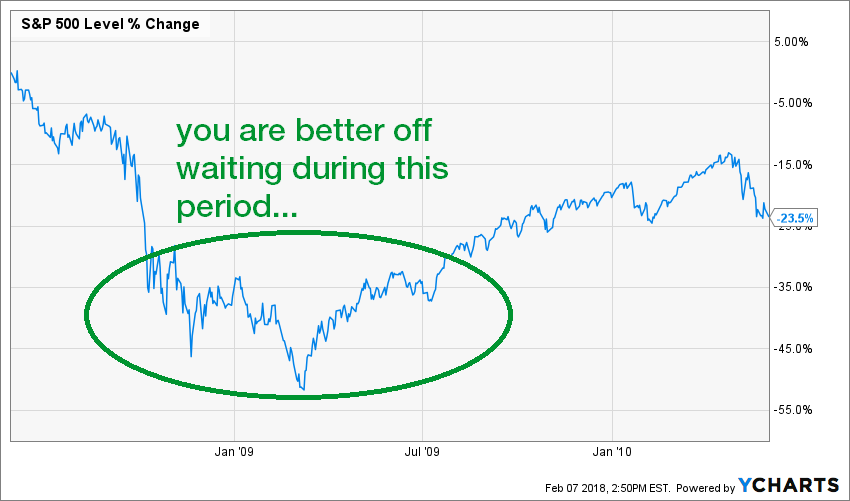
A few months ago, I’ve received over 100K as the commuted value of my pension plan started working on my retirement portfolio. As the market was trading at an all-time high, I still decided to invest the full proceeds. Keep in mind I’m only 36 and will not be touching this money for a while. A friend of mine asked me if I had invested the money differently if I was about to retire. That’s a very good question. How do you invest your money as a retiree? Do you have to make anything different? Do you have to modify your retirement plan once you have crossed the finish line?
In the following three articles, I’ll explain how I would change my portfolio if I was about to retire. Today’s part is about the difference between a retirement portfolio and a retiree’s portfolio.

What is the difference between a retirement portfolio and a retiree’s portfolio?
One may argue it’s the same. One day, you are in your 30’s, you sit down with a financial planner and you build a retirement plan. You start saving and you follow the course for 30 some years. Then, you wake up at 65 with a big pile of cash to manage in your portfolio. Do you keep the course? What is so different between having a retirement portfolio and a retiree’s portfolio?
A retirement portfolio is first and foremost about growth. The goal of a retirement portfolio is to grow large enough to finance a big part of your life without having to work. The advantage of the retirement portfolio is that you have several years in front of you. Market cycles, bears, bulls and goats don’t matter much as you have plenty of time to recover from it. Therefore, you can build a solid core portfolio and still have a part of your money invested into growth stocks. Companies like Amazon (AMZN), Helmerich & Payne (HP) or Canopy Growth (WEED.TO) are suitable for a retirement portfolio. However, their level of fluctuation may indispose many retirees.
A retiree’s portfolio is first and foremost about stability
The last thing you want as a retiree is not sleeping because your portfolio value goes up and down or because your dividends are being cut. Therefore, it’s not the time to hold AMZN, HP or WEED.TO in your portfolio anymore. Or at least, it is time to reduce those positions to less than 10% of your portfolio.
I think the most important thing when you build a retiree portfolio is to aim for a “stress-free” portfolio. For some, this will go through increasing the portfolio of fixed income. From my experience, a 75% fixed income and 25% equity portfolio is probably the best performing “safe portfolio”. The problem today is that fixed income assets aren’t paying much interest.
If I was to retire today, I would definitely keep all my money invested in stocks. The difference is that I would select more “bond-like” type of stocks. Companies that don’t move much over time, but that pay solid dividend through times. A few examples could be the classic Procter & Gamble (PG), 3M Co (MMM), Johnson & Johnson (JNJ) or Coca-Cola (KO).
The importance of yield
In an ideal world, one would never touch its capital. If you could live off, let’s say, dividend (ah!), that would be the perfect retirement plan. But in order to do so, you would need about $1,5M to $2M in order to generate about $50K per year and keep up with inflation. Yeah, I know, you can generate $50K per year in dividend with 900K invested in high yielding stocks, but good luck keeping up with inflation! Many people forget that 50K today won’t worth the same thing in 20 years from now. Using this cool inflation tool, you can see that 50K back in 1998 now worth 76K.
So yes, the yield is important, but it’s not everything. Low yielding companies such as Disney (DIS), Lowe’s (LOW), Canadian National Railway (CNR.TO), Alimentation Couche-Tard (ATD.B.TO) or Lassonde Industries (LAS.A.TO) will be discarded and replace by higher yield stocks. If I had to build a retiree portfolio today, I would probably shift a good part of my money toward stocks with a more generous yield. My target would be between 2% and 5%. In my opinion, anything over 5% may be considered risky. Plus, there is very little chance a 5%+ yielder is able to increase its dividend and keep up with inflation over time. And please, don’t look at the past 5 years to give me examples. We are in a middle of a very strong bull market and a growing economy. Everybody looks good on their Prom day. Try taking pictures of them the following morning 
You need a withdrawing plan
As I just mentioned, chances are you will not have 1.5M$-$2M to live off your dividend only. If it’s the case, you will need a withdrawing plan. In fact, I would suggest you meet with a fee-based financial planner (CFP) that will write down a retirement plan. The advantage with a fee-based advisor is that he is not supposed to sell you anything. He is just supposed to write down a plan and charge something between $1,000 and $2,000 for it. If you have $800K to invest, see that 2K expenses as a one time management fee of 0.25%. It’s a pretty cheap price to make sure you know what, when and how to withdraw your money!
The year before my retirement, I would most likely leave all my dividend payment in my cash account and start selling a few shares of each position in order to cover for a full year of income. Therefore, if I expect I need $50,000 per year at retirement, I would make sure I have $50,000 in cash on day 1 of my retirement. The reason why I would do this is to make sure I have enough money to manage future withdrawals depending on how the market goes. Imagine you are fully invested and count on selling shares on a monthly basis. Then, the market crash by 30% and you are forced to sell lots of shares at a loss to finance your lifestyle. If you have a year worth of retirement in cash, you can wait until the storm passes and start selling again. Most market correction last less than 2 years. Even during the worst crash of the history, you could have waited a year before starting to sell and be in a better position:

Source: Ycharts
What should be your main concern while building it?
I think the dividend yield becomes more important once you are retired. However, I would still focus a lot more on dividend growth perspectives. The reason is quite simple; if a company is able to increase its dividend for the next 10 years, chances are the stock will do well. A company that is not able to increase its payouts is a company that needs all its money to operate. Therefore, it leaves little room for any bad lucks or economic downturns.
I would write down my investment thesis for each position with a clear focus on dividend growth and future growth vectors. If I fail to explain how the company will grow in the future, I will simply ignore it and focus on another one.
In part two of this series, I will look at how I would transform my pension account into a retiree account. Let’s see how my portfolio would look like once I’m done with the transformation!
The post The Portfolio I Would Build if I Retire Today Part I appeared first on The Dividend Guy Blog.
